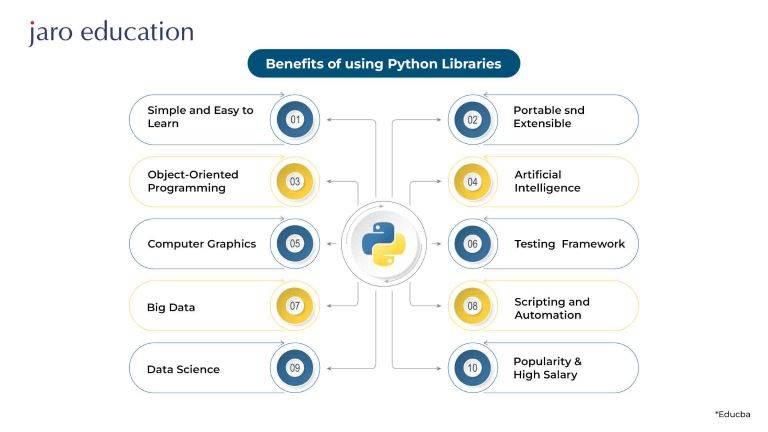Embarking on the journey too learn Python feels like stepping into a realm where logic meets creativity in a harmonious dance. The language,prized for its clear syntax and approachable nature,invites you to explore coding without overwhelm,making the experience as rewarding as it is indeed practical. As you delve into Python, you discover that learning to code is not merely about mastering a tool but about unlocking a way of thinking that applies to everyday problem-solving. Educational initiatives such as Google’s Python Class [[1]] and innovative school programs [[2]] illustrate how the language can be introduced through engaging, creative methods. Stories shared by educators and passionate learners alike remind you that every line of code is a step toward newfound understanding and endless possibility.
This exploration of Python teaches you that simplicity and clarity can coexist with depth and innovation. The language stands out for its ability to mold complex ideas into elegant, readable expressions, bridging the gap between novice curiosity and expert application. As you progress, you encounter frameworks and projects that challenge you to think differently and expand your horizons, echoing the ideas introduced in articles that cater to both middle and high school enthusiasts [[3]]. Each lesson and practice session builds confidence, encouraging a mindset that appreciates the blend of art and science inherent to programming. In this article, you will find insights, examples, and creative approaches designed to fuel your journey into the captivating world of Python.

Understanding Python Foundations and Structures
Exploring Python means immersing yourself in an surroundings where clarity meets functional elegance. The language’s foundations are built on a commitment to simplicity with clear syntax and explicit structure, a trait that resonates with both newcomers and seasoned developers. Its design encourages writing code that not only works but tells a clear story through its indentation and clean logic. Developers appreciate how Python’s ecosystem supports various approaches, whether you favor object-oriented or procedural techniques. The language’s strength lies in its vibrant community and rich libary collection, which provides a solid framework for varied projects, as highlighted in this guide [[2]].
Python’s structures are both intuitive and powerful, enabling developers to craft solutions that are robust and flexible. Consider its built-in components, which include dynamic typing and effortless memory management; these pave the way for rapid advancement and easy debugging. Here is a brief overview of some key elements:
- Lists: ordered sequences that adjust to your programming needs
- Dictionaries: mappings that connect keys to values seamlessly
- Tuples: immutable sequences providing reliability when consistency is required
To complement these points, take a look at the table below which succinctly summarizes Python’s core data structures:
| Element | Description |
|---|---|
| Lists | Ordered, mutable sequences |
| Dictionaries | Key-value mappings for fast lookup |
| Tuples | Immutable collections with fixed order |
The blend of simplicity and versatility makes Python an enduring choice for developers tackling everything from automation scripts to complex web applications. Its clear structure assists in maintaining neat code, while built-in support for various data types and operations keeps projects agile and scalable. With this robust foundation, you set the stage for not only learning but mastering the art of programming in an environment where every element serves a practical purpose.

Hands On Project Experience for Practical Mastery
imagine diving straight into real code challenges where every mistake is a lesson and every success fuels your passion. Hands-on projects transform abstract concepts into tangible results. This is your chance to construct practical solutions with Python as your toolkit. Embrace tasks like building basic calculators, data visualizations, and small-scale web apps. Consider these engaging exercises:
- interactive Games – code fun, user-driven logic
- Data Analysis – convert raw data into clear insights
- API Integration – bridge applications with external data
Projects also let you explore diverse challenges step-by-step. Below is a simple table summarizing essential project milestones:
| Project | Focus | Outcome |
|---|---|---|
| Calculator App | Logic & UI | Interactions & errors handling |
| Data Visualizer | Data Processing | Graphs & charts |
| Web Scraper | Automation | Real-time data |
Each project serves as a stepping stone. As you build and refine your solutions, you’ll notice that theory turns into practice. The evolution of your skills is visible with every line of code, and these experiments pave the way to mastering Python. Your journey is a mosaic of failures, breakthroughs and ultimately, practical expertise that prepares you for professional challenges.

Navigating python Libraries and ecosystem Innovations
Exploring Python’s vast realm means embracing an ever-refreshing pool of resources that fuel creativity when coding. The community continuously introduces projects that guide you towards more efficient and elegant solutions. You might find, for instance, notable additions like NumPy for numerical operations, pandas for data handling, and Flask for lightweight web applications. This lively ecosystem encourages you to dive deep into each module, test new methods, and continuously expand your toolkit. Along the way, several detailed guides provide valuable insights to enhance your journey on this path [[1]] and [[2]] while nurturing a passion for learning through shared expertise.
Innovation in this landscape isn’t only about adding new lines to your code—it’s about shaping a more purposeful development experience. Developers carve out efficient workflows that merge creativity with functionality, integrating fresh tools and refined frameworks designed to solve real-world challenges. Consider a glance at this brief comparison showing key options and features:
| library | Feature |
|---|---|
| NumPy | Efficient numerical computations |
| pandas | Data analysis and manipulation |
| Flask | Small and agile web framework |
This snapshot reveals how well-rounded the Python ecosystem is.Each library plays a distinct role in sparking innovation on every level.

Curating Tailored Resources for a Balanced Journey
When charting your journey with Python, it helps to balance different learning experiences.You might explore a hands-on tutorial that guides you smoothly from basic syntax to interactive projects ([[1]]). Whether you’re enjoying a concise, step-by-step guide or engaging in personal coaching sessions ([[2]]), a varied approach keeps the process dynamic. Consider mixing self-paced exercises,interactive lessons and group-based challenges. Diverse tools enhance comprehension while forging skills that really stick.
Below is a simple breakdown of resource types designed to suit various learning preferences:
| Resource type | Description | Duration |
|---|---|---|
| Tutorials | Guide you step-by-step from basics to advanced code | 2-4 hours |
| Coaching Sessions | one-on-one help and personalized guidance | 6 weeks |
| Interactive Projects | Real coding exercises to build hands-on skills | Variable |
In Conclusion
Embarking on your journey to learn Python is more than just learning a language—it’s stepping into a world of creativity and efficiency. As you explore each concept, remember that every line of code is a brushstroke in your digital canvas. The resources you discovered,like the insightful tutorial by G van Rossum and the interactive experience from DataCamp, serve as robust bridges to mastering Python. Your progress may sometimes feel like piecing together a puzzle, yet every new snippet of understanding builds a strong foundation for coding mastery. With persistence and a sense of adventure, you’ll soon realise that the world of Python is as welcoming as it is vast.
Continue to explore,experiment,and evolve your skills as you navigate this programming language. The journey may have moments that challenge your patience, but each challenge brings insights and opportunities for growth. Trading frustration for patience, you’ll find that learning Python transforms into a gratifying hobby. Rely on trusted guides such as Google’s Python tutorial offering clear instructions and practical examples as you move forward [[3]]. Embrace the process, knowing that each step brings you closer to becoming not just a coder, but a genuine creator in the digital realm.
